1. Introduction

Why does your coffee taste the way it does? The secret lies in the roasting process. From the bright acidity of a light roast to the smoky depth of a dark roast, the transformation of green coffee beans through heat unlocks a world of flavor and aroma. This blog will guide you through the different coffee bean roasting levels, techniques, and best practices to help you master the art of coffee roasting and brew the perfect cup.
Bean Endothermic Reactions
The roasting process fundamentally involves complex endothermic and exothermic reactions within the coffee bean. The initial phase, characterized by a gradual increase in temperature, primarily involves the evaporation of moisture. This phase, often monitored using a bean probe thermometer, is crucial for ensuring even roasting and preventing cracking before the desired stage. Maintaining a consistent rate of temperature increase during this phase, typically around 1°C per minute, minimizes uneven heat distribution, a common cause of defects such as “quakers” (unroasted beans). The precise control achieved through modern drum roasters, often employing PID controllers, allows for fine-tuning of this crucial initial step.
“Roasting is the alchemy of coffee–where heat transforms humble beans into a symphony of flavors, each roast telling its own story.”
– James Hoffmann, World Barista Champion and Coffee Expert
1. Introduction
2. What Are Coffee Bean Roasting Levels?
3. The Science Behind Coffee Roasting
4. Tools and Materials for Coffee Roasting
5. Step-by-Step Guide to Roasting Coffee Beans
6. Common Challenges and How to Overcome Them
7. Benefits of Roasting Your Own Coffee
8. Expert Recommendations for Beginners
9. Frequently Asked Questions (FAQs)
10. Related Topics and Applications
11. Conclusion
Unlock Your Inner Coffee Alchemist
- Evaporation of moisture is crucial for initiating Maillard reactions later in the roasting process.
- Uneven roasting leads to density variations within the bean, affecting extraction and flavor.
- The “first crack” sound indicates the bean’s internal pressure is releasing, signaling a key stage in roasting.
- PID controllers in modern roasters maintain precise temperature control, minimizing bean defects.
- Bean probe thermometers allow for real-time monitoring of internal bean temperature, ensuring consistent roasting.
- Monitoring the rate of temperature increase helps prevent scorching or under-roasting.
| Key Aspect | Initial Phase | Temperature Control | Roasting Impact |
|---|---|---|---|
| Moisture Evaporation | Crucial for even roasting | 1°C per minute increase | Prevents cracking and defects |
| First Crack | Indicates internal pressure release | Monitored with bean probe | Signals key roasting stage |
| PID Controllers | Ensures precise temperature | Minimizes uneven heat | Reduces bean defects |
2. What Are Coffee Bean Roasting Levels?
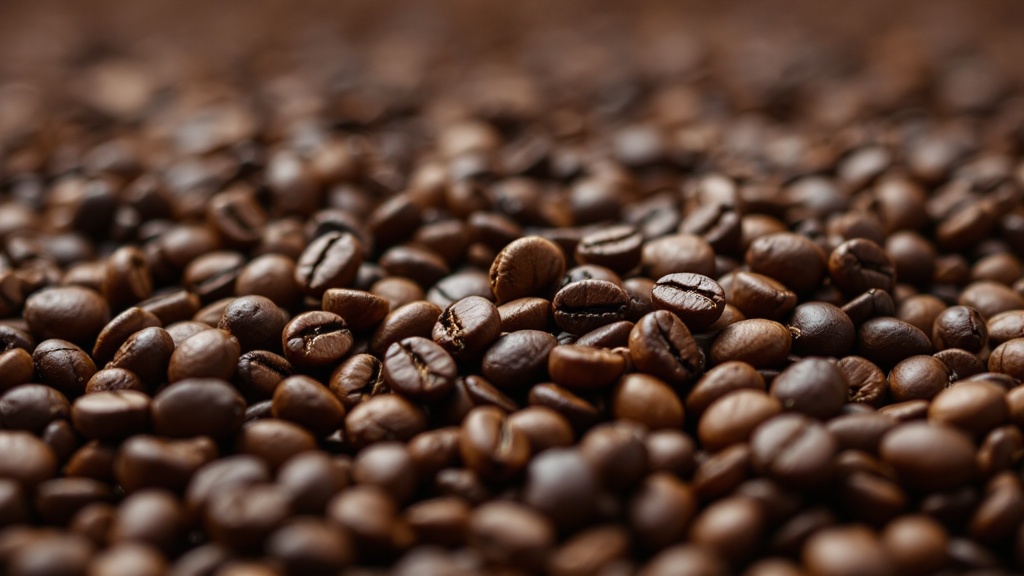
Coffee roasting is the process of heating green coffee beans to transform their chemical and physical properties. This process is crucial for developing the flavor, aroma, and color we associate with coffee. The degree of roast determines the “roasting level,” impacting the final cup’s acidity, body, and caffeine content.
“Roast levels are the compass of coffee flavor–light for brightness, medium for balance, and dark for boldness. Mastery lies in understanding their impact.”
– Scott Rao, Author of
The Coffee Roaster’s Companion
Key Concepts:
Light Roast:
Light brown beans with no oil on the surface. These roasts boast high acidity and pronounced origin flavors, making them ideal for pour-over or drip brewing. Think of a bright, citrusy Ethiopian Yirgacheffe.
Medium Roast:
Medium brown beans offer a balanced acidity, aroma, and flavor, with a fuller body. This is the most popular roast level, suitable for various brewing methods. A classic example is a smooth, nutty Sumatran Mandheling.
Dark Roast:
Dark brown to nearly black beans with an oily surface. These roasts have low acidity and bold, smoky, or even bitter flavors, often preferred for espresso. A dark-roasted French Roast or Italian Roast exemplifies this profile.
According to the National Coffee Association, 60% of coffee drinkers prefer medium roast, while 25% favor dark roast. As Scott Rao emphasizes in
The Coffee Roaster’s Companion
, understanding roast levels is paramount to achieving desired flavors.
Bean End-Point Temperatures
Precise control of bean end-point temperature is crucial for achieving the desired roast level. This temperature, measured using a probe inserted into the roasting chamber or via indirect methods such as color analysis, signifies the final internal temperature reached by the beans at the end of the roasting process. This point is not merely a single temperature but rather a range, dependent on factors including bean origin, size, density, and the specific roast profile employed. For instance, a light roast might target a final bean temperature between 380-395°F (193-202°C), while a dark roast could reach 430-445°F (221-230°C) or higher. However, these ranges are not absolute; experienced roasters frequently adjust based on real-time bean behavior and sensory feedback during the roast.
- The ideal endpoint temperature varies significantly depending on the desired roast level (light, medium, dark, etc.).
- Bean size and density directly impact heat transfer, affecting the time needed to reach the target temperature.
- Roasting environment factors (e.g., airflow, drum design) can influence the accuracy of temperature readings.
- Experienced roasters often use a combination of temperature readings and visual cues (bean color, cracking sounds) to determine the endpoint.
- Using a calibrated thermometer is essential for accurate and consistent roasting results.
- Beyond the endpoint, the cooling process is also critical in influencing the final bean characteristics.
3. The Science Behind Coffee Roasting
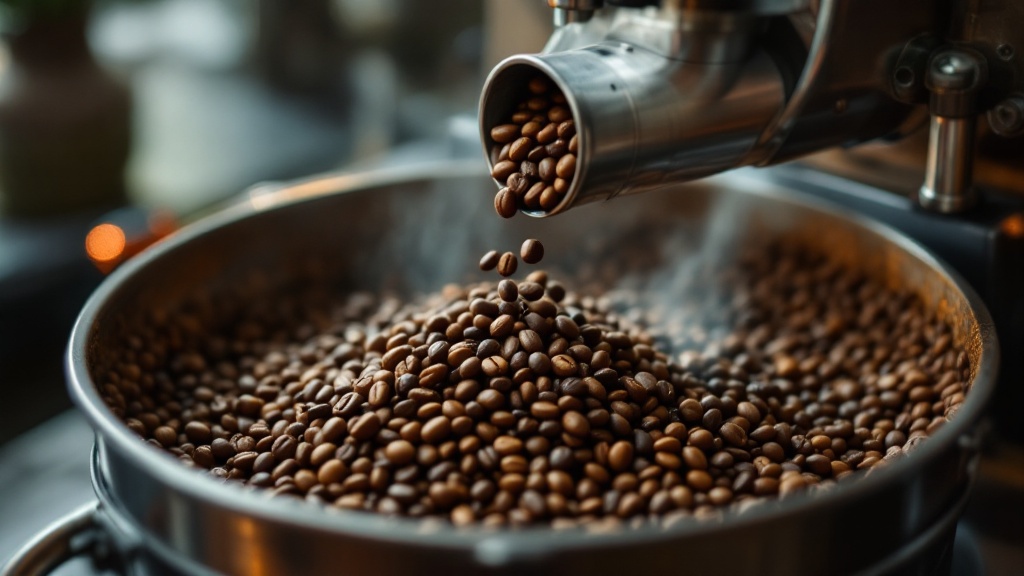
The magic of coffee roasting lies in the chemical reactions that occur within the bean:
Maillard Reaction:
This reaction between amino acids and reducing sugars contributes significantly to the development of flavor and the rich brown color of roasted coffee.
Caramelization:
The breakdown of sugars during roasting adds sweetness and complexity to the coffee’s profile.
Key Milestones:
First Crack:
The audible popping sound during roasting signifies the bean’s internal moisture escaping. This marks the beginning of the light roast stage.
Second Crack:
A second round of popping indicates the breakdown of the bean’s cellulose structure, signaling the start of the dark roast stage.
Specialty coffee roasters often stop the roast just after the first crack to preserve delicate origin flavors, showcasing the nuances of the bean’s terroir.
First Crack Kinetics
The “first crack” in coffee roasting marks a crucial phase transition, characterized by the rapid release of trapped gases within the bean’s cellular structure. This endoergic process, primarily driven by the pyrolysis of polysaccharides and the subsequent vaporization of water, is critically dependent on several factors. The rate of heat transfer, governed by the bean’s size, density, and the roaster’s airflow and drum geometry, directly influences the timing and intensity of the first crack. A higher rate of heat transfer results in a faster and more abrupt first crack, while slower heat transfer leads to a gentler, more protracted event. Variations in bean density, often due to differences in varietal and pre-processing, can further complicate this process; denser beans may require longer roast times to reach the first crack.
- The temperature at first crack typically ranges from 350-400°F (177-204°C), but varies based on bean origin and roast profile.
- Acetylfurfuryl alcohol and furfural are key volatile compounds released during the first crack, contributing significantly to the coffee’s aroma.
- Uneven bean sizes within a batch can lead to inconsistent first crack timing, impacting overall roast quality.
- Roast level is directly affected by the duration and intensity of the first crack; a longer, gentler first crack might indicate a lighter roast.
- Monitoring the rate of internal bean temperature rise during this phase helps predict first crack onset.
4. Tools and Materials for Coffee Roasting
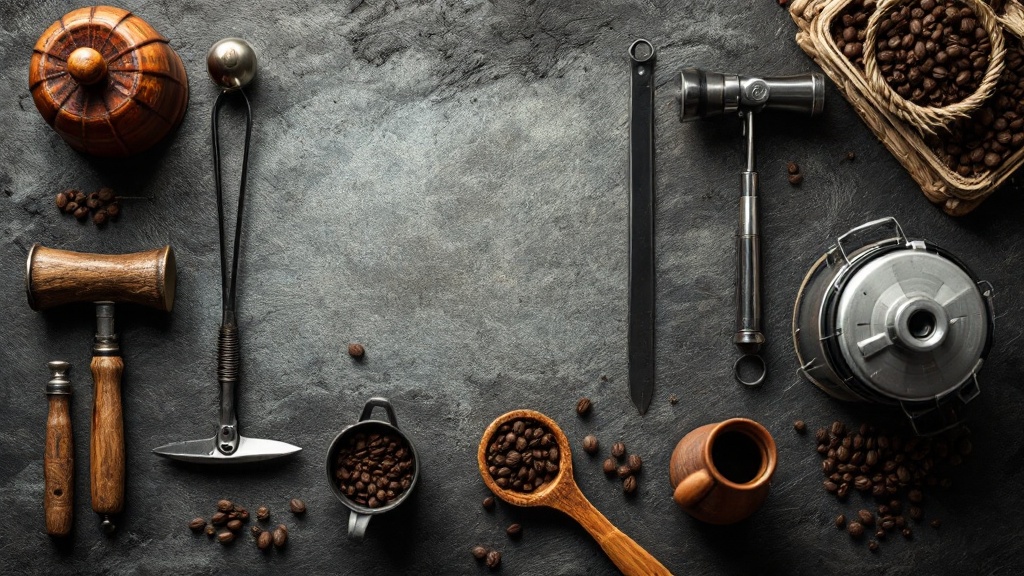
Essential Tools:
Coffee Roasters:
Drum roasters offer greater control over roast development and caramelization, while air roasters provide even heating and a cleaner flavor profile.
Thermometers and Roasting Software:
Precise temperature monitoring is crucial for consistent results.
Cooling Trays and Storage Containers:
Rapid cooling stops the roasting process, while airtight containers preserve freshness.
Materials:
High-Quality Green Coffee Beans:
Freshly harvested, high-quality green beans are the foundation of a great roast.
Airtight, Opaque Containers:
Protect your roasted beans from light, heat, and moisture.
Actionable Tip:
Start with a beginner-friendly home roaster like the FreshRoast SR800 to gain experience without a large initial investment.
Roast Profile Development
Developing a consistent roast profile is crucial for achieving repeatable results in coffee roasting. This involves precise control over several key parameters: charging temperature, roast rate (measured in degrees per minute or °F/min), and the application of heat throughout the roast cycle. Variations in any of these parameters significantly influence the final bean characteristics, including acidity, body, and flavor development. For instance, a rapid roast rate can lead to under-developed flavors and a harsh, acidic cup, while a slow roast rate might result in over-roasted beans with bitter, burnt notes. Monitoring these parameters requires accurate instrumentation. Digital thermometers, such as those with type K thermocouples, are essential for measuring the bean temperature during the roasting process. These thermocouples, when correctly calibrated and positioned within the roaster’s bean mass, provide a relatively accurate representation of the average bean temperature. Without such precision, achieving consistent roast profiles is challenging.
5. Step-by-Step Guide to Roasting Coffee Beans
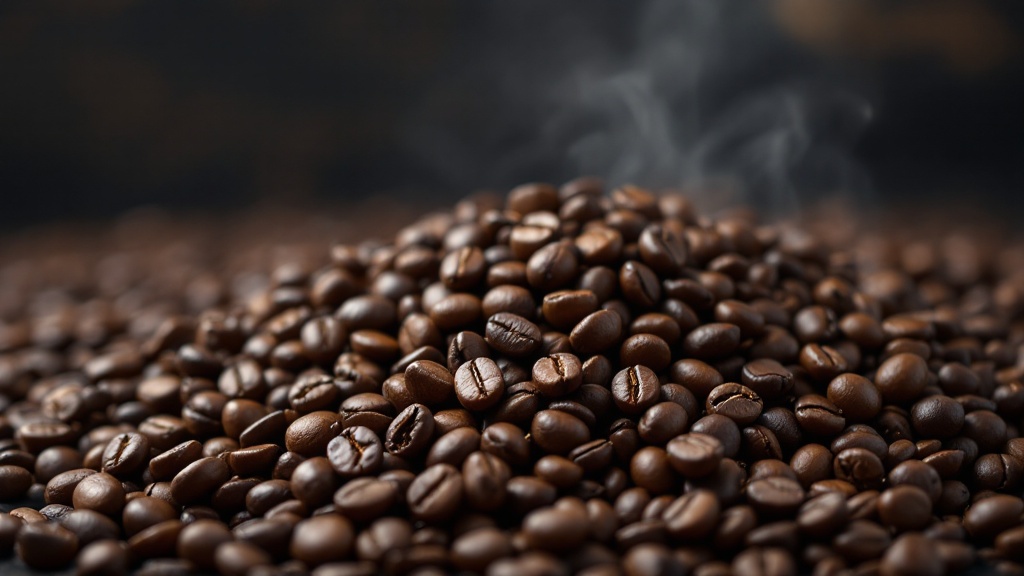
Preheat the Roaster:
Ensure consistent heat application from the start.
Monitor Temperature:
Aim for 196-205°C (385-401°F) for light to medium roasts.
Listen for Cracks:
The first and second cracks are your auditory guides to roast development.
Cool Beans Quickly:
Use a cooling tray to stop the roasting process and lock in the desired flavors.
Store Properly:
Store roasted beans in airtight, opaque containers away from light and heat.
Expert Tip:
Anne Cooper, in
Coffee Roasting Made Simple
, recommends keeping a detailed roast log to track time, temperature, and observations for consistent results.
Roast Curve Analysis
Analyzing the roast curve is critical for achieving consistent and repeatable coffee roasts. The roast curve is a graphical representation of bean temperature over time, typically plotted against the elapsed time from the start of the roast. This visual representation allows roasters to identify key inflection points, such as the drying phase, browning phase, and first and second crack. Variations in the curve’s slope and inflection points directly correlate with the final roast characteristics, impacting cup quality significantly. A shallower slope during the drying phase might indicate insufficient heat transfer, potentially leading to uneven roasting, while a rapid increase in bean temperature during the browning phase can result in scorching and bitter flavors.
- Different roast levels (light, medium, dark) exhibit distinct curve shapes, with variations in slope and inflection points.
- Analyzing the rate of rise (RoR) during key phases helps identify potential issues like uneven heating or excessive heat input.
- Software and hardware tools, such as roast loggers and profiling software, are essential for accurate curve analysis.
- The “end point” on the curve-where the roast is stopped-is critical to achieving the desired roast profile and flavor profile.
- Experienced roasters use curve analysis to make real-time adjustments to gas flow, drum speed, and airflow during roasting.
6. Common Challenges and How to Overcome Them

- Underdeveloped Beans:
Grassy or sour flavors indicate underdeveloped beans. Extend the roast time or increase the charge temperature to address this.
Over-Roasting:
Burnt or bitter flavors are a sign of over-roasting. Reduce the roast time or lower the temperature in subsequent roasts.
Inconsistent Roasts:
Uneven color or flavor is often caused by uneven heat distribution. Stir the beans manually or use a roaster with better airflow.
Chaff Accumulation:
Chaff buildup can create smoke or fire hazards. Clean the roaster regularly and use a chaff collector to prevent this.
- Analyze query execution plans using
EXPLAIN ANALYZEto identify bottlenecks like full table scans. - Utilize PostgreSQL’s built-in profiling tools to monitor query performance over time and identify trends.
- Consider using partial indexes to reduce index size and improve write performance when indexing specific subsets of data.
- Optimize table design; ensure appropriate data types are used to minimize storage space and improve query efficiency.
- For complex queries, explore query rewriting techniques to improve performance. This could involve using CTEs or different join strategies.
- Regularly review and update database statistics using
ANALYZEto ensure the query planner has accurate information.
7. Benefits of Roasting Your Own Coffee
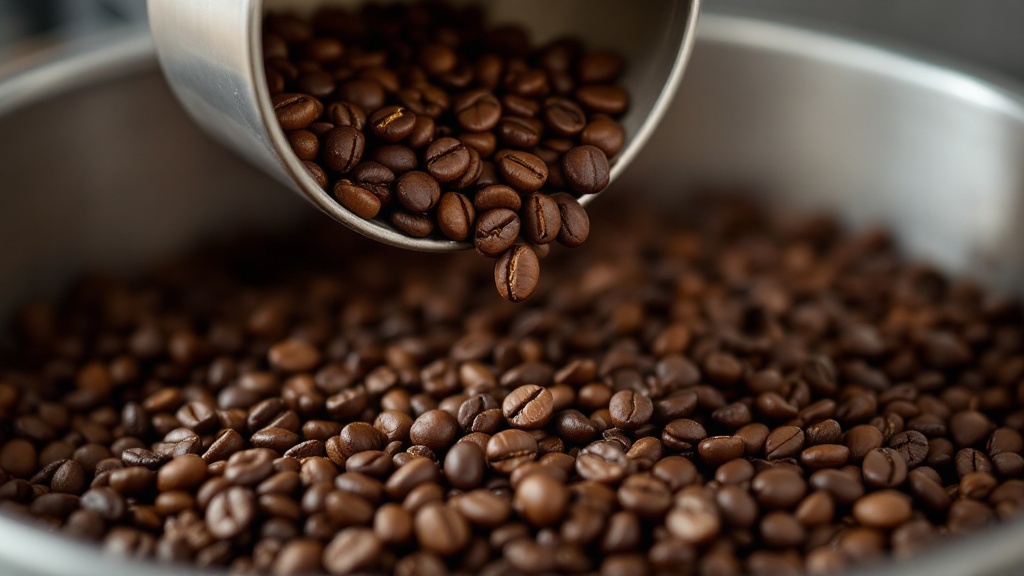
Roast Development & Maillard Reaction
Achieving optimal roast development hinges on precise control over the Maillard reaction, a complex series of chemical reactions between amino acids and reducing sugars. This reaction, initiated around 240°F (116°C), is responsible for the browning and development of characteristic coffee aromas and flavors. Understanding the kinetics of this reaction is critical for consistent roasting. The rate of the Maillard reaction is heavily influenced by temperature, time, and the bean’s inherent moisture content. A higher roasting temperature accelerates the reaction, leading to a faster development time and a darker roast profile with potentially bitter notes if overdone. Conversely, lower temperatures extend the reaction time, yielding a lighter roast with more nuanced acidity and brighter flavors.
Customization:
Tailor roast levels and flavor profiles to your exact preferences.
Freshness:
Enjoy coffee with enhanced aromatic and flavor complexity at its peak freshness.
Cost Savings:
Roasting your own coffee can be significantly more affordable than buying pre-roasted specialty coffee. Home roasting can save up to 50% compared to buying premium roasted coffee.
Sustainability:
You can support ethical sourcing practices and reduce packaging waste by purchasing green beans directly.
8. Expert Recommendations for Beginners

Start Small:
Begin with small batches to experiment and refine your roasting technique.
Focus on Quality:
Invest in high-quality green coffee beans for the best flavor outcomes.
Experiment Gradually:
Adjust one variable at a time (e.g., time or temperature) to understand its impact on the roast.
Join Communities:
Connect with online forums or local coffee roasting groups for advice, tips, and feedback.
As James Hoffmann notes in
The World Atlas of Coffee
, understanding bean origin and processing methods is essential for achieving optimal roasting results.
Bean Origin & Roast Profiles
The relationship between bean origin and optimal roast profiles is complex, influenced by factors intrinsic to the bean itself and the desired final cup characteristics. Altitude grown Arabica beans, for example, often exhibit a higher density and lower moisture content compared to lower altitude counterparts. This density directly impacts heat transfer during roasting, requiring adjustments to the roast curve to prevent scorching or under-development. Higher-density beans necessitate slower heating rates in the early stages (drying phase) to ensure even moisture evaporation, preventing cracking inconsistencies and uneven roast development. Conversely, lower-density beans may require slightly faster initial heating rates to achieve a similar level of moisture evaporation within an acceptable timeframe.
- Bean density varies significantly based on altitude, variety, and processing methods.
- Higher altitude Arabica beans often require longer roast times due to their density.
- Robusta beans, generally denser than Arabica, need careful roasting to avoid bitterness.
- Moisture content directly affects roasting time and the development of desirable flavors.
- Different roast levels (light, medium, dark) impact the final cup profile differently depending on bean origin.
- Proper roast curves are crucial for achieving balanced flavor profiles and avoiding defects.
9. Frequently Asked Questions (FAQs)

Q1: What’s the difference between light and dark roast caffeine content?
A:
Contrary to popular belief, light roasts generally contain slightly more caffeine than dark roasts due to the shorter roasting time.
Q2: Can I roast coffee beans at home without a roaster?
A:
While dedicated roasters provide the best control, you can use a popcorn popper or even a skillet, but results may be less consistent.
Q3: How long do roasted coffee beans stay fresh?
A:
For optimal flavor, roasted coffee beans are best consumed within 2-4 weeks if stored properly in an airtight container away from light, heat, and moisture.
10. Related Topics and Applications
Coffee Brewing Methods:
Different roast levels pair better with specific brewing techniques. Light roasts shine in pour-over and drip methods, while dark roasts are often preferred for espresso and French press.
Sustainability in Coffee:
Sourcing ethically grown green coffee beans and minimizing waste during the roasting process contribute to a more sustainable coffee industry.
Flavor Chemistry:
Delve deeper into how the roasting process affects coffee compounds like chlorogenic acids, lipids, and sugars, transforming the flavor profile of the bean.
Home Roasting Kits:
The growing market for home roasting kits offers beginner-friendly equipment and resources to make roasting accessible to everyone.
11. Conclusion

Coffee bean roasting is a fascinating blend of art and science, providing endless opportunities for customization and creativity. By understanding the nuances of roast levels, mastering essential techniques, and learning from experts, you can unlock the full potential of your coffee beans and create truly personalized flavor experiences. Start your coffee roasting journey today by experimenting with small batches and exploring the spectrum of roasting levels. Share your experiences in the comments below or connect with a coffee roasting community to deepen your knowledge!
Bean End-Point Temperature Control
Precise control of bean end-point temperature is critical for achieving the desired roast level and flavor profile. This temperature, measured internally using a thermocouple inserted into a representative bean, signifies the completion of the roasting process. Variations of even a few degrees Celsius can significantly impact the final product. For instance, a lighter roast, aiming for a “cinnamon” roast level, might target an end-point temperature of approximately 190-205°C (374-401°F), while a darker “French” roast might reach 240-250°C (464-482°F). These ranges are approximate, however, and the ideal end-point temperature will depend on factors such as bean origin, size, and moisture content.
- Using a thermocouple ensures accurate internal bean temperature measurement, crucial for consistent roasting.
- Bean size impacts roasting time; smaller beans roast faster and reach end-point temperature quicker.
- Moisture content affects the final temperature; higher moisture beans will require a longer roast.
- The “first crack” sound often, but not always, correlates with a specific temperature range, depending on bean type and roast level.
- Post-roast cooling is critical to halt the roasting process and prevent over-roasting.
- Different roast levels have distinct aroma and flavor profiles directly linked to their end-point temperatures.
Unlock Your Inner Coffee Alchemist

From the vibrant acidity of a light roast awakening your senses to the comforting depth of a dark roast embracing your palate, the journey through coffee bean roasting levels is a transformative experience. Understanding the science behind the roast, recognizing the distinct characteristics of each level, and appreciating the profound impact on the final cup empowers you to curate your coffee experience like never before.
Whether you’re a seasoned home roaster or simply seeking a deeper connection with your daily brew, exploring roast levels opens a door to a world of flavor possibilities. By considering the origin characteristics of your beans, your preferred brewing method, and your desired taste profile, you can confidently select the perfect roast level to unlock the full potential of your coffee.
So, embrace the knowledge you’ve gained. Experiment with different roasts, refine your palate, and discover the nuanced flavors waiting to be unveiled. Your perfect cup is out there, waiting to be discovered. Start exploring today and elevate your coffee ritual to an art form.
Roast Development & Maillard Reaction
The Maillard reaction is a crucial chemical process driving the transformation of green coffee beans into their roasted counterparts. This non-enzymatic browning reaction occurs between amino acids and reducing sugars within the bean, initiated by the application of heat during roasting. The reaction’s onset is typically observed around 240°F (115°C), accelerating rapidly as temperatures climb. Specific amino acids, such as lysine and arginine, react with sugars like glucose and fructose, forming hundreds of volatile and non-volatile compounds responsible for the characteristic aroma and flavor profiles of roasted coffee. The extent and speed of the Maillard reaction are directly influenced by roasting parameters such as temperature, time, and bean moisture content. Variations in these parameters significantly affect the final product’s flavor profile, ranging from bright acidity in lighter roasts to bitter, smoky notes in darker roasts.
“`
- The reaction produces melanoidins, complex polymers contributing to coffee’s color and body.
- Temperature control is critical; exceeding 400°F (204°C) can lead to pyrolysis and burning.
- Bean moisture content influences reaction speed; drier beans roast faster.
- Different coffee varieties have varying amino acid and sugar profiles, impacting Maillard reaction outcomes.
- The Strecker degradation, a related reaction, contributes to flavor development alongside the Maillard reaction, producing aldehydes and other aromatic compounds.
| Key Aspect | Reaction Temp | Bean Moisture | Flavor Impact |
|---|---|---|---|
| Maillard Reaction | 240°F (115°C) | Drier beans roast faster | Bright acidity to smoky notes |
| Temperature Control | Exceeds 400°F (204°C) | N/A | Pyrolysis and burning |
| Strecker Degradation | N/A | N/A | Produces aldehydes and aromatics |

